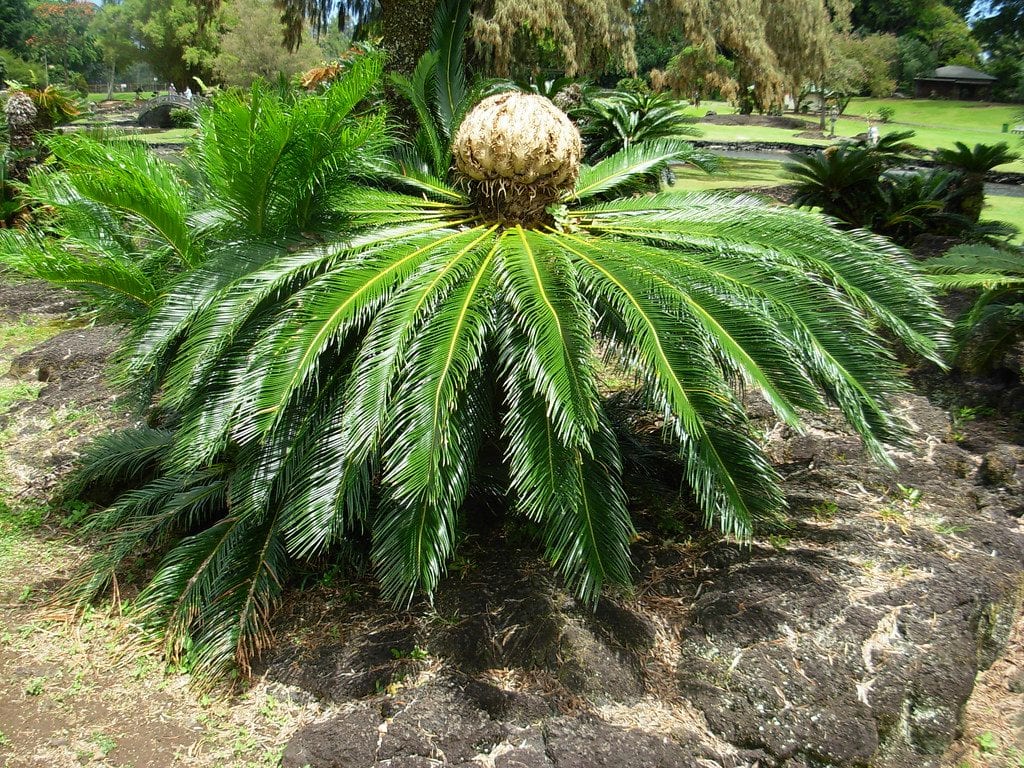
Image - Flickr / brewbooks
Do you know what cycad plants are? By the name you may think of the cica, whose scientific name is Cycas revoluta, a shrub that is widely grown in gardens and pots, and you certainly would not go astray. In fact, she is one of the species that make up this family that began its evolution before the dinosaurs did 300 million years ago.
All of them are very similar, but the truth is that when you start to compare them you see that they have small details that make them unique.
Origin and characteristics of cycads
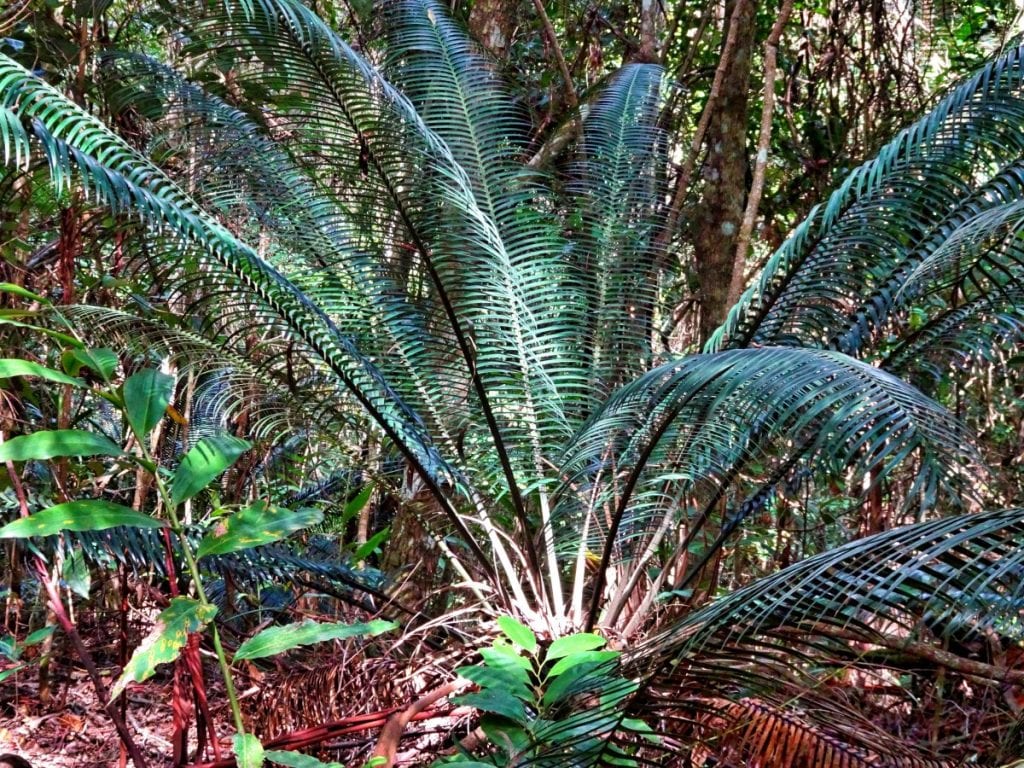
Our protagonists They are primitive plants, whose origin dates back to the Permian, 300 million years ago and reached a peak of abundance and diversity in the Mesozoic, that is, about 250 million years ago. At that time dinosaurs already inhabited the Earth, and there were many who fed on cycads.
Today, grow naturally in the Southern Hemisphere, such as in Mexico, Central America, Australia, South America, or parts of Africa. Although its diversity of species is still very interesting, with 300 being accepted, unfortunately there are many that are in danger or on the way to extinction.
They are classified within the group of gymnosperm plants, a term that translates as "naked seed" referring to its non-protection. And it is that, unlike angiosperms, the seeds are exposed from the first moment in which they begin their development; This means that they do not have any shell or the like to protect them.

Classification of cycads
Cycads are a total of 2 families, made up of 10 to 11 genera with about 300 species. Its most accepted botanical classification is the one developed in 2011:
- Order: Cycadales.
- Cycadaceae family. About 107 species, native to East Africa, Japan and Australia.
Examples: all Cycas. - Family Zamiaceae: There are 9 genera with some 206 species, originating from tropical and subtropical Africa, Australia and America.
Examples: Dioon, Bowenia, Macrozamia, Lepidozamia, Encephalartos, Stangeria, Ceratozamia, Microcycas, and Zamia.
- Cycadaceae family. About 107 species, native to East Africa, Japan and Australia.
What uses do they have?

Ornamental
Cycads are plants that are used mostly as ornamental plants. They have a certain resemblance to palm trees -although they are actually very different plants-, and also they are very easy to take care of.
Edible
The stem and seeds of the Cycas produce starch called sago or sago that, after having undergone treatments to eliminate toxicity, can be consumed.
Which are your principal characteristics?
These are plants with a trunk that can reach 20 meters in height and a thickness of 30 to 40 centimeters. It is crowned by pinnate leaves that are arranged in a spiral and are usually between 2 and 4 meters long.
To multiply, they have developed strobili or cones consisting of an axis and leaves that carry ovules (megasporophils) if they are female specimens or in leaves that carry pollen (microsporophils) if they are male. These structures are yellowish in color, being those of the male specimens frequently larger than those of the female ones.
The seeds are usually pink, orange or red, colors that serve to attract animals such as turtles or bats, who will take care of keeping them away from the mother plants, taking them to their shelters. Some will serve as food, but many others will germinate.
Cycad varieties for garden
If you want to have some, then we are going to talk about the most popular ones:
Cycas circinalis
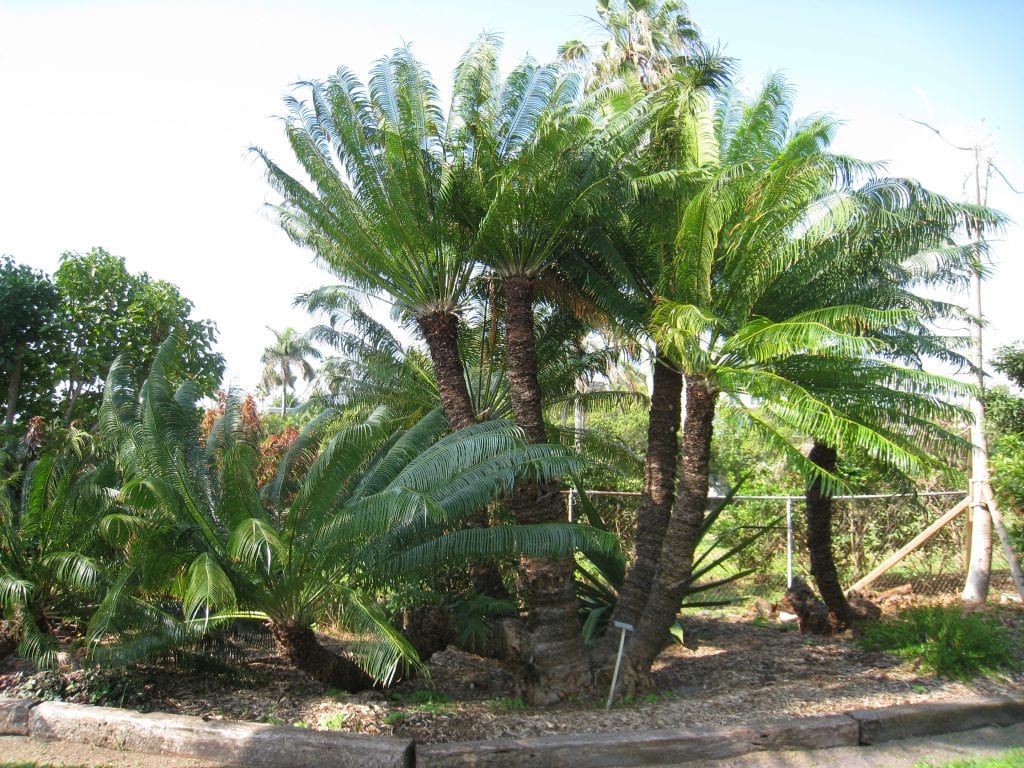
Called queen sago, elegant cica, or long-leaved cicas, it is a species native to Sri Lanka, where can reach 6 meters in height. The leaves are dark green, reaching up to 2,4 meters.
It resists weak and occasional frosts of up to -2ºC.
Cycas revoluta
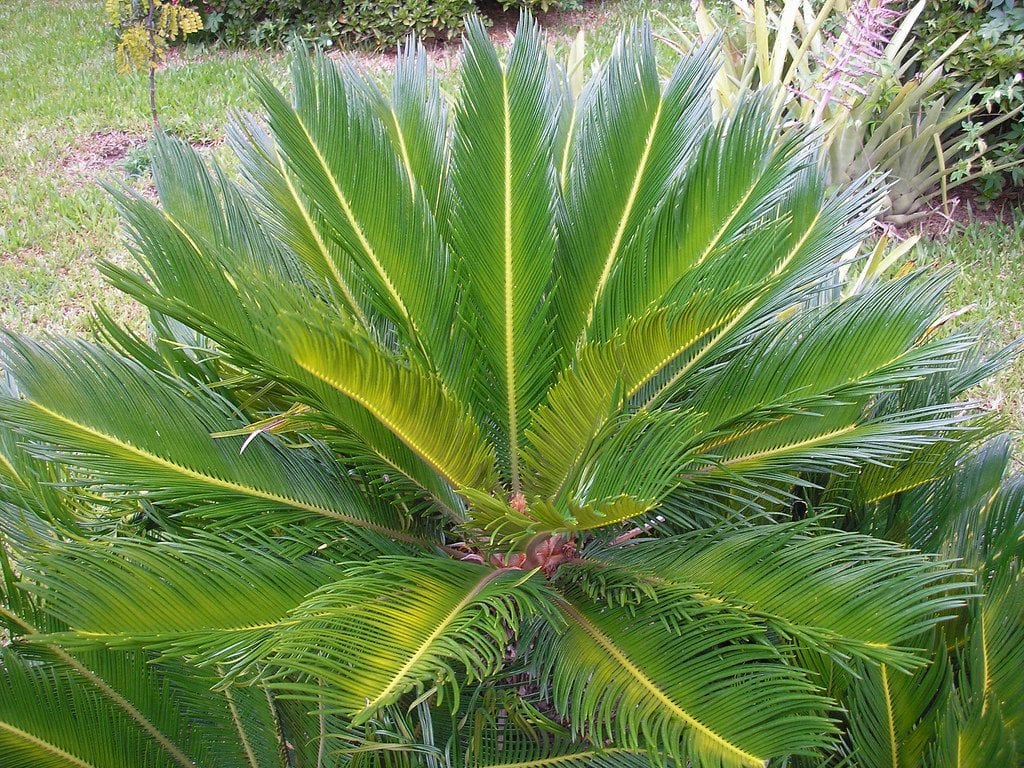
Image - Flickr / Raquel and Ives
Known as the cica, sago or true sago of India, it is a species native to southern Japan that can reach a height of 7 meters, although the normal thing is that it does not exceed 3-4 meters in cultivation. The leaves are green and are up to 130 centimeters in length.
Resists up to -11ºC.
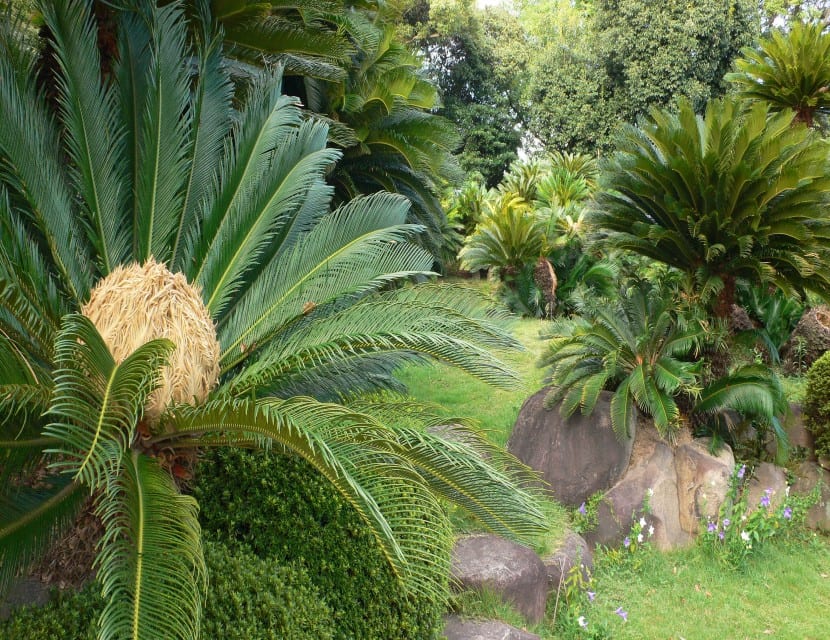
Dioon Edule
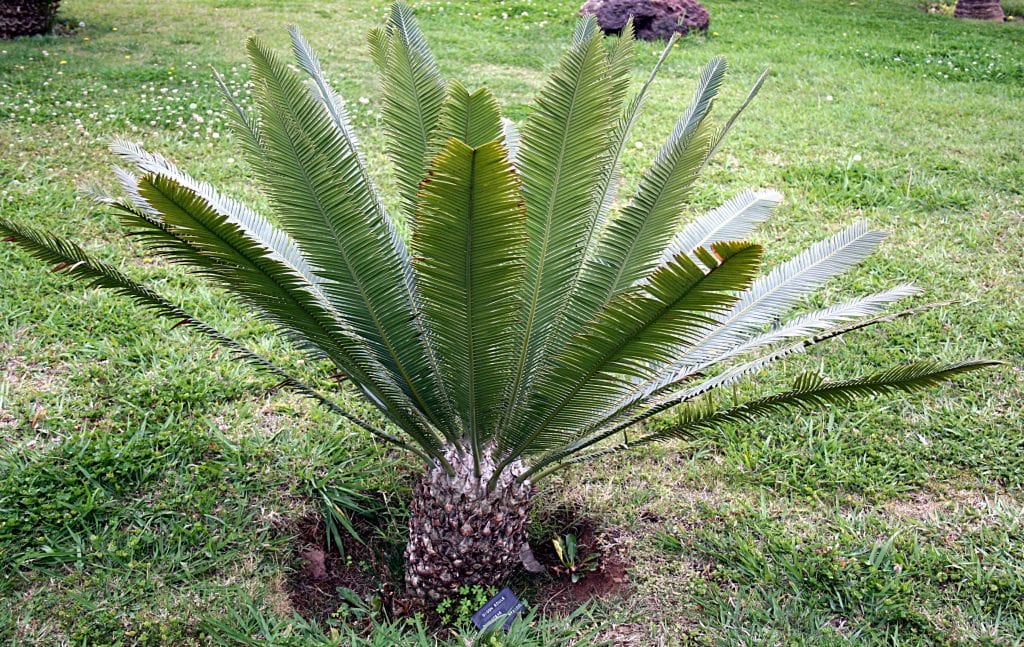
Image - Wikimedia / Hedwig Storch
It is known as a chamal, and it is originally from Mexico. Grows to a height of 3-4 meters, with leaves up to 150 centimeters in length. It has no thorns.
Resists up to -4ºC.
Encephalartos woodii
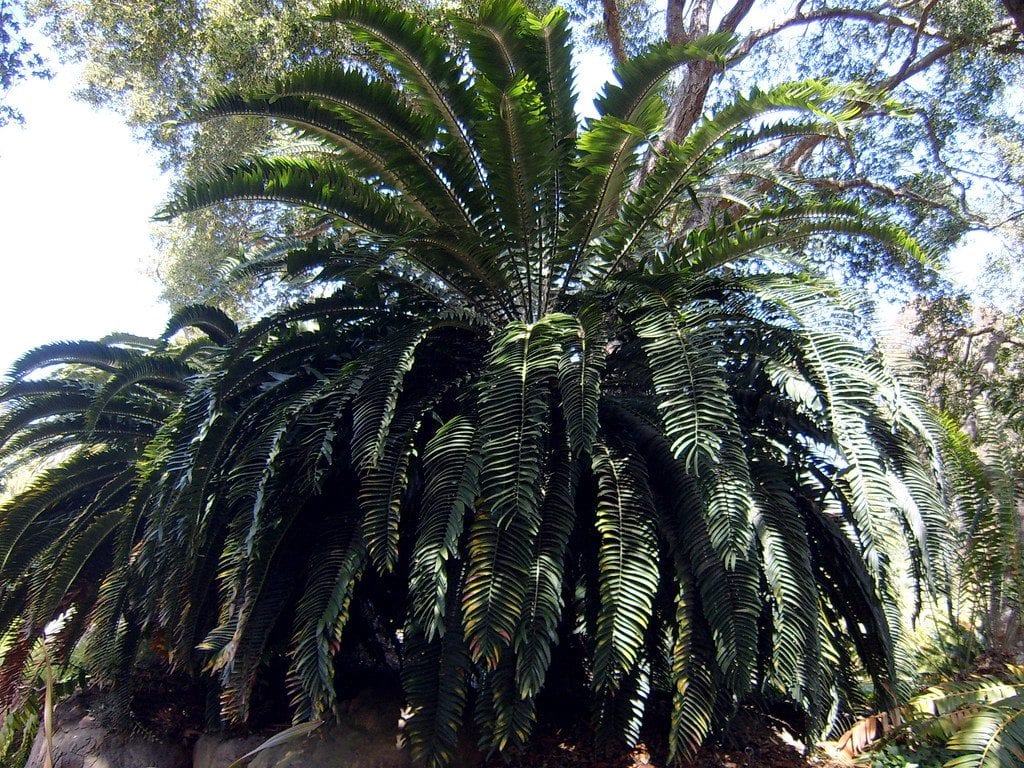
Image - Flickr / 5u5
It is called the Wood's cycad, and it is endemic to Natal in South Africa. It can reach 6 meters in height, with a trunk up to 50 centimeters in diameter. The leaves are quite long, and can be up to 2,5 meters long.
Resists cold, but not frost.
Zamia furfuracea
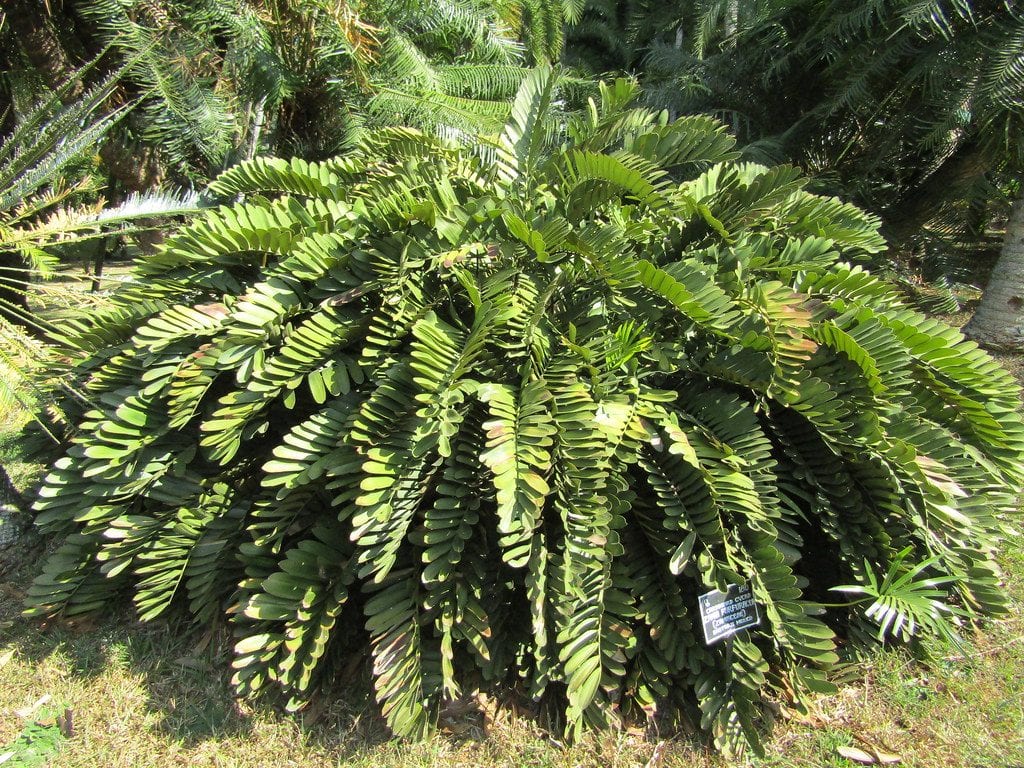
Image - Flickr / Leonora (Ellie) Enking
Called as Florida arrowroot, it is an endemic plant of the southeast of Veracruz, in Mexico. It reaches a maximum height of 1 meter, with a cylindrical trunk of about 30 centimeters in diameter.. The leaves are green and pinnate, with broader leaflets than other cycads.
It resists frosts down to -3ºC.

What do you think of these plants? Did you know what its characteristics were? We hope you have learned a lot about them so that you can enjoy them in your garden 🙂.
What's up greetings.
I have a question about cycad care. I don't know exactly which species I have, but according to the photos presented here, it is between Cycas revoluta and Dioon edule. I am in the state of Veracruz, Mexico.
Well, the question is: Do you know how I can eliminate a parasite or fungus that is affecting cycads?
Someone who saw them made a comment to me that they have the coconut palm mite infestation, or something like that. The leaves are filled with white mites, and as the weeks go by, they suck the savila from them until they are brown, or what is the same, until they dry. And according to the same person told me, if said mite is not eliminated, it will end up killing them.
Therefore, if you could guide me on what method to use to eliminate said mite, or what product should I buy and how to use it, I will thank you in advance.
See you soon.
Hello Gabriel.
From what you're telling us, they seem to have mealybugs. These are eliminated with any anti-mealybug insecticide, or even by cleaning the leaves with water and neutral soap (and a lot of patience 🙂).
You have more information about this pest here.
Greetings.
In some undisturbed or semi high forests ... we found Dion Edule impressive, they were forests ... with plants up to 4 meters high ... my business is now gardening and landscaping, when I find cicadas with seeds, I propagate them, we even give seedlings to friends and clients ... greetings my email vmvillar1959@gmail.com
Great that you dedicate yourself to it 🙂
Greetings.